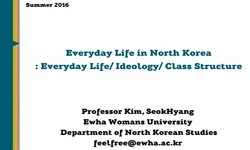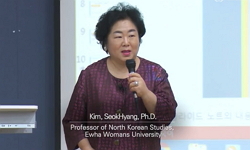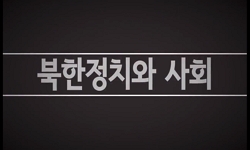북한은 왜 한국군의 군사적 대응에도 불구하고 소형무인기 영공 침범과 같은 강도 높은 도발을 하는 것일까? 이와 같은 북한의 도발 의도는 무엇이며 한국군은 어떻게 준비하고 대응해야 할...
http://chineseinput.net/에서 pinyin(병음)방식으로 중국어를 변환할 수 있습니다.
변환된 중국어를 복사하여 사용하시면 됩니다.
- 中文 을 입력하시려면 zhongwen을 입력하시고 space를누르시면됩니다.
- 北京 을 입력하시려면 beijing을 입력하시고 space를 누르시면 됩니다.

북한의 무인기 도발 의도와 운용양상 분석에 따른 대응방향 = Response Direction against North Korea's UAV provocation based on the Analysis of North Korea's Intentions and Operational Patterns
한글로보기https://www.riss.kr/link?id=A108678489
- 저자
- 발행기관
- 학술지명
- 권호사항
-
발행연도
2023
-
작성언어
-
-
주제어
파키스탄 핵개발 ; 북한 핵개발 ; 전범위억제 ; 전술핵무기 ; 핵지휘통제 ; North Korea ; Gray Zone Strategy ; Small-UAS ; Russia-Ukraine War ; DOTMLPF-P
-
KDC
300
-
등재정보
KCI등재
-
자료형태
학술저널
-
수록면
41-74(34쪽)
- 제공처
- 소장기관
-
0
상세조회 -
0
다운로드
부가정보
국문 초록 (Abstract)
북한은 왜 한국군의 군사적 대응에도 불구하고 소형무인기 영공 침범과 같은 강도 높은 도발을 하는 것일까? 이와 같은 북한의 도발 의도는 무엇이며 한국군은 어떻게 준비하고 대응해야 할까? 평시 북한의 무인기 도발 양상 사례 및 러시아-우크라이나 전쟁에서 양국의 무인기 운용사례 등을 분석한 결과, 북한은 다음 2가지의 주요한 의도를 가지고 무인기 도발을 지속할 것으로 예상한다. 첫째, 북한의 미사일 및 무인기 도발 등에 대한 한국군의 대응방식이 과거와 유사하거나 억제를 유도할 정도로 치명적이지 못하였고, 대응과정에서 발생한 무기체계 발사오류 등은 북한의 지도부에게 추가적인 도발에 대한 잘못된 메시지를 주었기에, 북한은 회색지대전략의 일환으로 도발을 지속하며 대한민국 내 남남갈등 및 한국군의 신뢰도를 약화하려 할 것이다. 둘째, 제8차 당 대회에서 김정은이 무인기의 발전을 장기전략 차원에서 반드시 달성되어야 하는 목표로 제시하였고, 러시아-우크라이나 전쟁에서 무인기의 작전적 유용성이 유의미하다는 전쟁 교훈 분석이 일반화되고 있음에 따라, 북한은 무인기 개발을 지속할 것이며 과정 중에 전략적인 기회의 창을 활용하여 신형 무인기를 통한 재도발 시도 및 한국군의 대비태세와 능력을 시험하려 할 것이다. 또한, 북한은 러시아-우크라이나 전쟁을 통해 미국과 같은 강대국을 상대로 약소국인 북한이 싸울 때, 무인기가 제공할 수 있는 능력이 탁월하다는 점을 깨달았기에, 북한의 무인기 개발 양상 및 전시 운용방식에 대한 충분한 분석이 필요하고 이에 대한 대응방안 수립이 긴요한 실정이다. 따라서, 이에 대한 한국군의 대응방안을 합동전투발전분야(DOTMLPF-P) 관점에서 세부적인 정책제안 및 전력발전방안을 제시하였다. 한국군은 제시된 필수 요구능력 및 개념들에 대해서 단계적이고 세밀한 검토를 수행하고, 이를 기반으로 한 올바른 군사력 건설 추진에 박차를 가하여 북한의 재도발 억제 및 미래전에 대비해야 할 것이다.
다국어 초록 (Multilingual Abstract)
Why does North Korea engage in highly provocative actions such as small-Unmanned Aircraft Systems (S-UAS) intrusions into South Korean airspace despite the existing military response from the ROK military? What are North Korea's intentions behind such...
Why does North Korea engage in highly provocative actions such as small-Unmanned Aircraft Systems (S-UAS) intrusions into South Korean airspace despite the existing military response from the ROK military? What are North Korea's intentions behind such provocations, and how should the ROK military prepare and respond? Based on the analysis of North Korea's unmanned aerial vehicle provocations during armistice period, as well as cases from the Russia-Ukraine war, it is anticipated that North Korea will continue S-UAS provocations with the following two main intentions. First, it is expected that North Korea will continue its provocations as part of its strategy of exploiting gray areas, aiming to weaken intra-South Korean conflicts and erode trust in the ROK military. This is due to the fact that the ROK military's response to North Korea's missile and S-UAS provocations, among others, has not been sufficiently effective or deterrent enough compared to the past. Additionally, incidents such as weapon system launch errors during the response process have conveyed a misguided message to North Korea's leadership, further incentivizing their continued provocations. Second, during the 8th North Korea's Party Congress, Kim Jong-Un presented the development of unmanned aerial vehicles as a long-term strategic goal that must be achieved. With the generalization of the analysis highlighting the operational utility of UAVs in the Russia-Ukraine war, North Korea aims to test the ROK military's preparedness and capabilities by attempting further provocations using S-UAS. Furthermore, North Korea has realized through the Russia-Ukraine war that UAVs offer excellent capabilities for a smaller country like North Korea when engaged in a conflict with a powerful nation such as the U.S. Therefore, it is crucial to conduct thorough analysis of North Korea's UAVs development patterns and wartime operational methods. It is imperative to establish response strategies and plans to address this situation. Therefore, I presented detailed policy suggestions and force development plans for the ROK military in the context of joint combat development elements (DOTMLPF-P). The ROK military should conduct and meticulous reviews of the proposed essential capabilities and concepts. Based on this, it should accelerate the construction of a proper military force to deter North Korea's further provocations and prepare for future warfare.
동일학술지(권/호) 다른 논문
-
북한은 파키스탄의 길을 가고 있는가: 북한과 파키스탄의 전술핵무기 역할과 핵지휘통제 비교
- 국방대학교 안보문제연구소
- 김태형 ( Kim Tae-hyung )
- 2023
- KCI등재
-
우크라이나 전쟁과 미래전: 인도-태평양 지역 및 한반도에 대한 함의
- 국방대학교 안보문제연구소
- 설인효 ( Seol Inhyo )
- 2023
- KCI등재
-
미 국방부 무기체계 자율성 훈령 개정에 따른 자율무기체계 정책 분석과 이해
- 국방대학교 안보문제연구소
- 마정목 ( Jungmok Ma )
- 2023
- KCI등재
-
해양 전자기스펙트럼 주도권 확보를 위한 대한민국 해군 전자기스펙트럼 작전과 우세 전략
- 국방대학교 안보문제연구소
- 강노아 ( Nohah Kang )
- 2023
- KCI등재




 KISS
KISS







